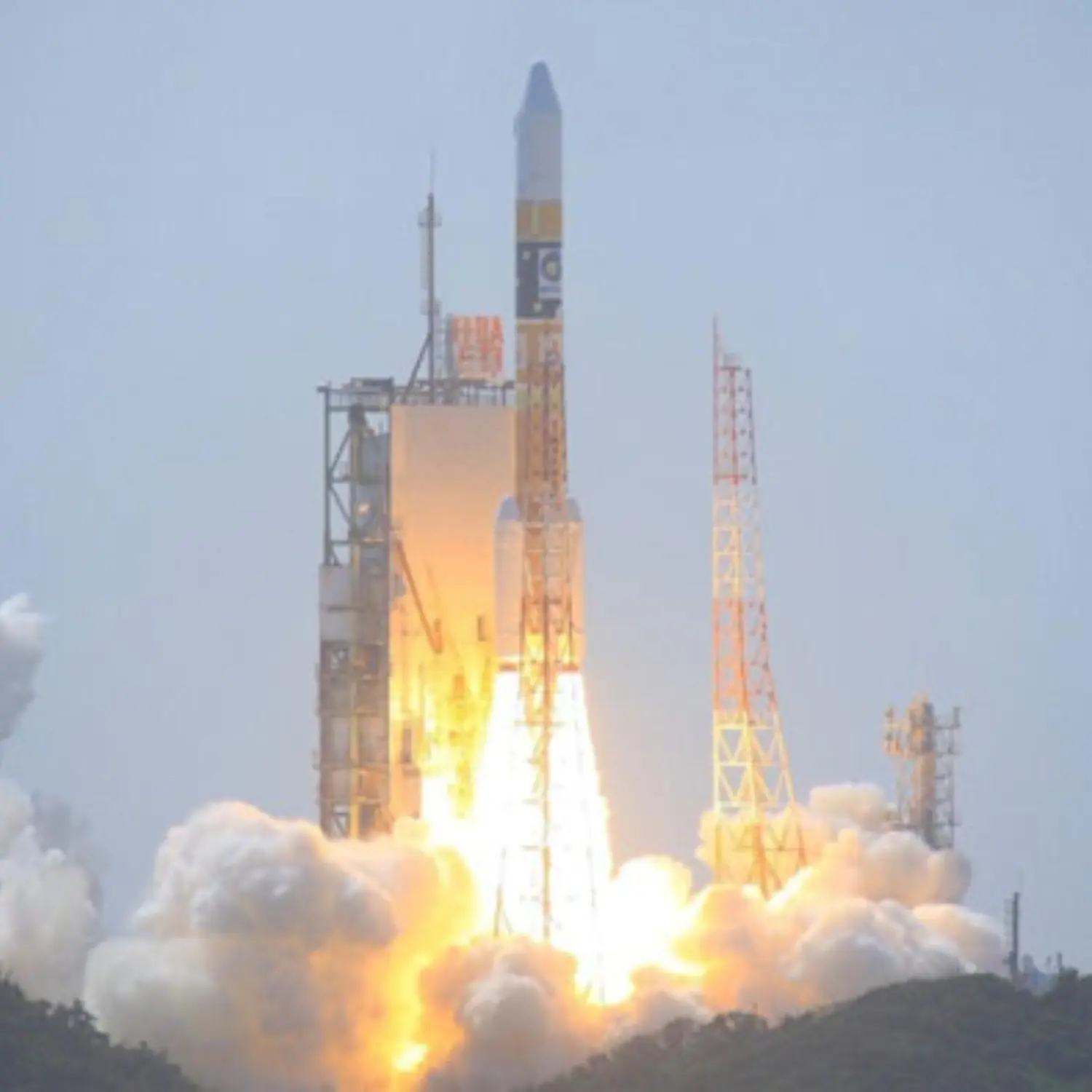/
Kaguya
Launch Success
Liftoff Time (GMT)
01:31:01
Friday September 14, 2007
Mission Details
Launch Notes
First Japanese mission to the Moon. Last flight of H-IIA 2022.
Kaguya
Kaguya, or SELENE (Selenological & Engineering Explorer) has 13 instruments including imagers, a radar sounder, laser altimeter, X-ray fluorescence spectrometer and gamma-ray spectrometer to study the origin, evolution, and tectonics of the Moon from orbit. The spacecraft consists of three separate units: the main orbiter, a small relay satellite (RSat), and a small VLBI (Very Long Baseline Interferometry) satellite (VRAD). The orbiter is a rectangular box carrying the scientific instrumentation, measures about 2.1 m by 4.2 m, and has a mass of roughly 1600 kg. The relay satellite is an octagonal prism and will be used to transmit communications from the orbiter to Earth. The VLBI satellite is the same shape as the relay satellite and will be used to conduct precise investigations on the position and precession of the Moon. SELENE was launched into a 281 km × 232805 km × 29.9° earth orbit, from which it will inject itself into a lunar-transfer orbit, which will take 5 days to reach the Moon, where it will be put into an initial 120 × 13000 km orbit at an inclination of 95 degrees. The relay satellite will be released into a 100 × 2400 km orbit and then the VLBI satellite will be released into a 100 × 800 km orbit. The orbiter will then be lowered to its nominal 100 km circular orbit. Selene will carry out observations for approximately one year.
Lunar orbit
3 Payloads
3,000 kilograms
Rocket


Agency
MHIRocket
Height: 53m
Payload to Orbit
GTO: 4,500 kg
Fairing
Diameter: 4.07m
Height: 12m
Stages
2
Strap-ons
2
Launch Site
Stats
H-IIA
13th
Mission
2nd
Mission of 2007
2007
42nd
Orbital launch attempt